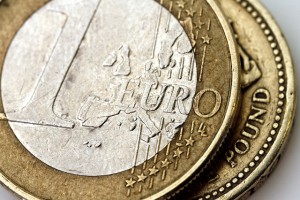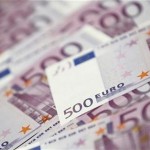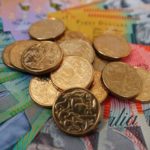 Yesterday’s trade saw EUR/GBP within the range of 0.7314-0.7345. The daily low was a fresh more-than-six-year low. The pair closed at 0.7315, losing 0.34% on a daily basis.
Yesterday’s trade saw EUR/GBP within the range of 0.7314-0.7345. The daily low was a fresh more-than-six-year low. The pair closed at 0.7315, losing 0.34% on a daily basis.
At 7:17 GMT today EUR/GBP was down 0.02% for the day to trade at 0.7313. The pair touched a daily low at 0.7309 at 2:15 GMT.
Fundamentals
Euro area
Spanish GDP – final estimate
The final estimate of Spains annual Gross Domestic Product probably pointed to 2.0% growth in the fourth quarter of 2014, confirming the preliminary data, released on January 30th. If so, this would be the fastest annual rate of growth since mid-2008. In Q3 economy expanded at an annualized pace of 1.6%, according to final data.
On a quarterly basis, Spanish economy probably expanded at a final 0.7% in Q4, according to the median forecast by experts. If so, this would confirm the preliminary GDP estimate and would be the fastest quarterly growth rate since Q3 2007. In Q3 2014 the nations GDP grew at a pace of 0.5%, according to final data.
In case a faster-than-projected rate of growth was reported, this would have a positive effect on the single currency. The final GDP data are due out at 10:00 GMT.
Change in German unemployment
The number of the unemployed people in Germany probably dropped by 10 000 in February, according to the median forecast by experts, following a decrease by 8 000 during January. If so, this would be the fifth consecutive month of declines. A decrease implies that consumer spending may be more active, while the latter is tightly related to economic growth. An increase in the number of the unemployed suggests the opposite.
At the same time, the seasonally adjusted rate of unemployment in the country probably remained unchanged at 6.5% in February, according to expectations. This has been the lowest rate in more than seven years.
The seasonally adjusted harmonized jobless rate fell for a tenth consecutive month in December to reach 4.8%. It has been the lowest rate since the fall of 1981. The number of unemployed persons dropped 1.5% to 2.01 million in December compared to November, while employment rose 0.2% to 40.05 million. The rate of employment in the country remained steady at 65.2%.
The unemployment rate for people aged between 15 and 24 continued to decrease in December, reaching 7.2% from a revised 7.3% in the prior month.
In case the number of people unemployed decreased more than projected and the unemployment rate dropped, this would certainly support demand for the euro. The Federal Statistics Office will release the official numbers at 8:55 GMT.
Italian Retail Sales
Annualized retail sales in Italy probably decreased at a pace of 0.4% in December, according to the median estimate by experts, following another 2.3% drop in November. If so, this would be the eighth consecutive month of decline in sales, but yet the least drop since May 2014, when a 0.4% slump was reported. In monthly terms, retail sales probably rose 0.3% in December, following a 0.1% uptick in November. If so, this would be fastest monthly rate of sales growth since May 2014, when a 0.6% gain was registered. This indicator reflects the change in the total value of inflation-adjusted sales by retailers in the country and provides key information regarding the consumer spending trend, while the latter is a key driving force behind economic growth. In case the retail sales index dropped at a faster-than-expected pace, this might have a limited bearish effect on the euro. The National Institute of Statistics (Istat) is expected to release the official report at 9:00 GMT.
Economic Sentiment Indicator (ESI)
The final value of the consumer confidence index probably confirmed the preliminary reading of -6.7, which was reported on February 19th. If so, this would be the highest level of confidence since October 2007, when the indicator stood at -6.0. The final index for January came in at -8.5, or in line with the preliminary value. The indicator measures consumer confidence on a scale of -100 to +100. A reading of -100 suggests a lack of confidence, zero means neutrality and a reading of +100 indicates extreme levels of confidence. The index reflects the level of optimism, which consumers have about economic development in the region. The Business and Consumer Survey is conducted by phone and includes 23 000 households in the Euro area. The questions asked stress on current economic and financial situation, savings intention and also on expected developments regarding consumer price indexes, general economic situation and major purchases of durable goods. This indicator is one of the five major components, that comprise the Economic Sentiment Indicator (ESI).
The ESI probably continued to improve in February, reaching 101.9, according to expectations, from a reading of 101.2 in January. If so, this would be the highest level since July 2014, when the index was reported at 102.1. The Economic Sentiment Indicator (ESI) is a composite indicator, consisting of five sectoral confidence indicators with different weights: Industrial confidence indicator, Services confidence indicator, Consumer confidence indicator, Construction confidence indicator and Retail trade confidence indicator. The ESI is calculated as an index with a mean value of 100.0 and standard deviation of 10 over a fixed standardized sample period.
Higher confidence usually implies greater willingness to spend, including large-ticket purchases, while consumer spending is a key factor behind economic growth. Therefore, in case the ESI climbed more than anticipated, this would cause a certain bullish impact on the euro. The European Commission is expected to release the official ESI reading at 10:00 GMT.
United Kingdom
Gross Domestic Product – second estimate
The second estimate of United Kingdoms GDP probably confirmed the preliminary estimate, released on January 27th, that economy expanded at a rate of 2.7% during the fourth quarter of 2014 compared to the same period a year ago. UK economy grew at an annualized rate of 2.6% in the third quarter last year and by 3.2% in Q2. The latter has been the fastest annual rate of growth since Q3 2007, when the GDP rose 3.3%.
According to the preliminary data, production in agriculture expanded 2.1% year-on-year in Q4, construction output went up 3.5%, while industrial production advanced 0.7%. As far as the sector of services is concerned, distribution, hotels and restaurants expanded 4.7%, transport, storage and communication was up 4.5%, while business services and finance increased 4.0%, according to the Office for National Statistics (ONS).
On a quarterly basis, the second estimate of UK GDP probably also matched the preliminary estimate of a 0.5% growth during Q4, following a 0.7% expansion during the third quarter.
The GDP represents the total monetary value of all goods and services produced by the nation over a specific period of time. What is more, it is the widest indicator of economic activity in the country. The report on GDP is of huge importance for traders, operating in the Foreign Exchange Market, as they will usually look for higher rates of growth as a sign that interest rates will follow the same direction. Higher interest rates will usually attract more investors, willing to purchase assets in the UK, while, at the same time, this will increase demand for the pound. Thus, in case the annual growth rate accelerated more than expected, this would boost the appeal of the local currency. The Office for National Statistics is expected to release the second (revised) GDP estimate at 9:30 GMT.
Pivot Points
According to Binary Tribune’s daily analysis, the central pivot point for the pair is at 0.7325. In case EUR/GBP manages to breach the first resistance level at 0.7335, it will probably continue up to test 0.7356. In case the second key resistance is broken, the pair will probably attempt to advance to 0.7366.
If EUR/GBP manages to breach the first key support at 0.7304, it will probably continue to slide and test 0.7294. With this second key support broken, the movement to the downside will probably continue to 0.7273.
The mid-Pivot levels for today are as follows: M1 – 0.7284, M2 – 0.7299, M3 – 0.7315, M4 – 0.7330, M5 – 0.7346, M6 – 0.7361.
In weekly terms, the central pivot point is at 0.7391. The three key resistance levels are as follows: R1 – 0.7443, R2 – 0.7495, R3 – 0.7547. The three key support levels are: S1 – 0.7339, S2 – 0.7287, S3 – 0.7235.





